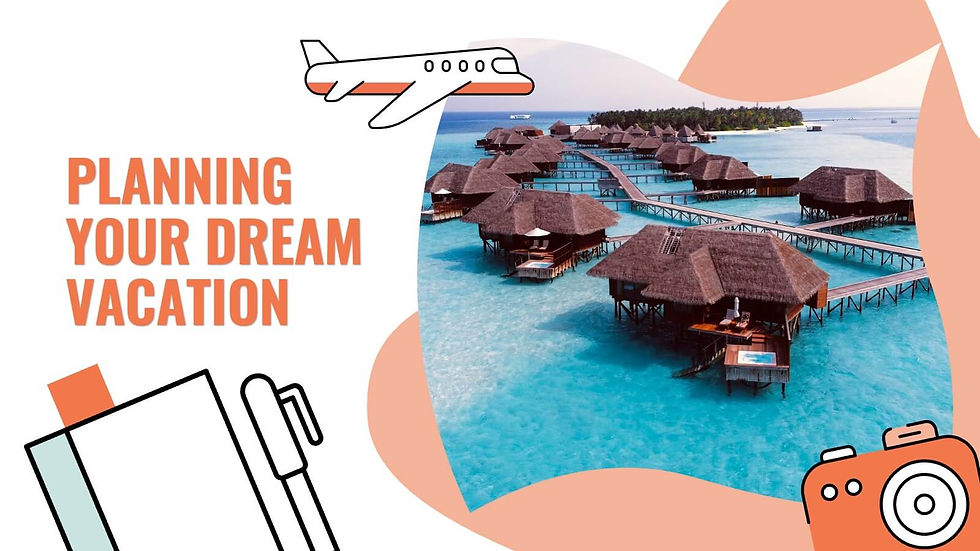Top Strategies for Reducing Overcrowding in Southern Europe’s Tourist Hotspots
- SAURAV ANAND
- Nov 20, 2024
- 4 min read

Southern Europe, with its rich history, stunning landscapes, and vibrant cultures, has long been a favorite destination for travelers. From the sun-kissed beaches of Spain and Greece to the historic streets of Italy, the region offers something for every type of tourist. However, this popularity has led to significant overcrowding in many of its most famous spots. As a result, both locals and tourists are increasingly concerned about the negative impact of mass tourism.
1. Promote Off-Peak Travel
One of the most effective ways to reduce overcrowding in Southern Europe’s tourist hotspots is by encouraging off-peak travel. By promoting visits during the shoulder seasons, such as late spring or early autumn, tourists can explore popular destinations without the summer crowds. For those booking a tour, tour operators can help balance the distribution of tourists across different months by offering special deals during these less busy periods. Not only does this relieve pressure on high-demand sites, but it also allows travelers to enjoy a more relaxed and intimate experience.
2. Diversify Tourist Itineraries
While cities like Rome, Barcelona, and Athens remain the heart of Southern Europe, other equally captivating locations remain less explored. Travelers booking a Europe tour packages can benefit from venturing beyond the typical tourist trails. For example, instead of overcrowded areas like Florence or Santorini, consider destinations like Puglia in Italy, the lesser-known islands of Greece, or the charming town of Ronda in Spain. These hidden gems offer rich cultural experiences without the stress of overcrowding. Tour operators can play a key role in promoting these less-visited but equally beautiful locations.
3. Implement Smart Technology and Visitor Management Systems
Another strategic approach to managing overcrowding involves the integration of smart technologies. Many tourist hotspots in Southern Europe are already adopting digital systems to manage the flow of visitors. For example, using apps to track visitor numbers in real-time can help tourists avoid peak times. Furthermore, reservations for popular sites, such as museums or historical landmarks, allow for a more organized experience. For travelers on a tour, such systems can make it easier to plan their visits while avoiding frustration caused by long queues or overcrowded sites.
4. Encourage Slow Travel and Regional Exploration
The concept of slow travel, which emphasizes spending more time in fewer destinations, can be an antidote to the rush of traditional tourism. By encouraging travelers to immerse themselves in local cultures and explore regions in-depth, overcrowding can be alleviated. For those planning a Europe trip, focusing on local experiences such as food tours, hiking, or engaging with local artisans can offer a richer and more authentic journey. packages that emphasize slow travel help foster meaningful connections with the places visited, while also distributing the tourist load across lesser-known areas.
5. Support Sustainable and Eco-Friendly Tourism
Sustainable tourism is more important than ever in the fight against overcrowding. Many destinations in Southern Europe are starting to implement sustainable practices that reduce the environmental and social impact of tourism. By promoting eco-friendly accommodations, encouraging responsible travel behavior, and supporting conservation efforts, we can preserve the beauty and authenticity of the region. Tourists booking an Europe tour should prioritize operators who promote eco-tourism practices and respect for local environments. Supporting businesses that are committed to sustainability ensures that the growth of tourism does not come at the expense of Southern Europe’s natural and cultural heritage.
6. Increase Accessibility to Lesser-Known Destinations
For years, the focus of Southern European tourism has been on a small set of world-renowned destinations. While these places continue to attract millions of tourists, it is essential to shift focus toward other equally fascinating but less crowded areas. Improved infrastructure, such as better train connections or road access to less-frequented towns and regions, can help ease the pressure on major tourist hotspots. By expanding travel routes and promoting these destinations in packages, tourists can have a more balanced experience. Encouraging exploration of areas like the island of Mallorca, the Amalfi Coast, or the Andalusian countryside can help distribute visitors more evenly across the region.
7. Community-Led Tourism Initiatives
Empowering local communities to take charge of tourism can also be an important strategy for reducing overcrowding. When local residents are involved in decision-making, it fosters sustainable practices and ensures that tourism benefits everyone, not just large corporations. Community-based tourism allows tourists to engage with locals, learn about traditional crafts, and participate in authentic cultural experiences. Tour operators offering Europe tour packages should collaborate with these communities to provide unique, off-the-beaten-path experiences that support local economies while also reducing the strain on more famous sites.
8. Introduce Visitor Quotas for Popular Destinations
In some of the most heavily trafficked tourist hotspots, implementing visitor quotas has proven effective in limiting overcrowding. By setting limits on the number of visitors allowed to enter certain attractions or destinations each day, tourist boards can maintain a balance between preserving the local environment and offering a positive experience for tourists. For travelers embarking on an European trip, such measures may seem restrictive, but they ultimately lead to a more enjoyable visit, with less noise and more space to take in the sights.
9. Raise Awareness About Responsible Tourism
Education is key to reducing overcrowding in Southern Europe’s tourist hotspots. Tourists should be made aware of the consequences of overcrowding and encouraged to adopt responsible behaviors during their travels. From reducing plastic waste to respecting local traditions and customs, small changes in behavior can make a big difference. Europe tour companies can provide helpful resources that teach travelers about the impact of their actions and the importance of sustainable travel practices.
Conclusion
As Southern Europe continues to be a top destination for travelers, managing the effects of mass tourism becomes more pressing. By implementing strategies like promoting off-peak travel, diversifying itineraries, utilizing smart technology, and fostering responsible tourism, overcrowding can be alleviated. Whether you’re planning exploring new cities, or booking a European trip, being mindful of these strategies ensures a more sustainable and enjoyable experience for both travelers and locals alike.



Comments